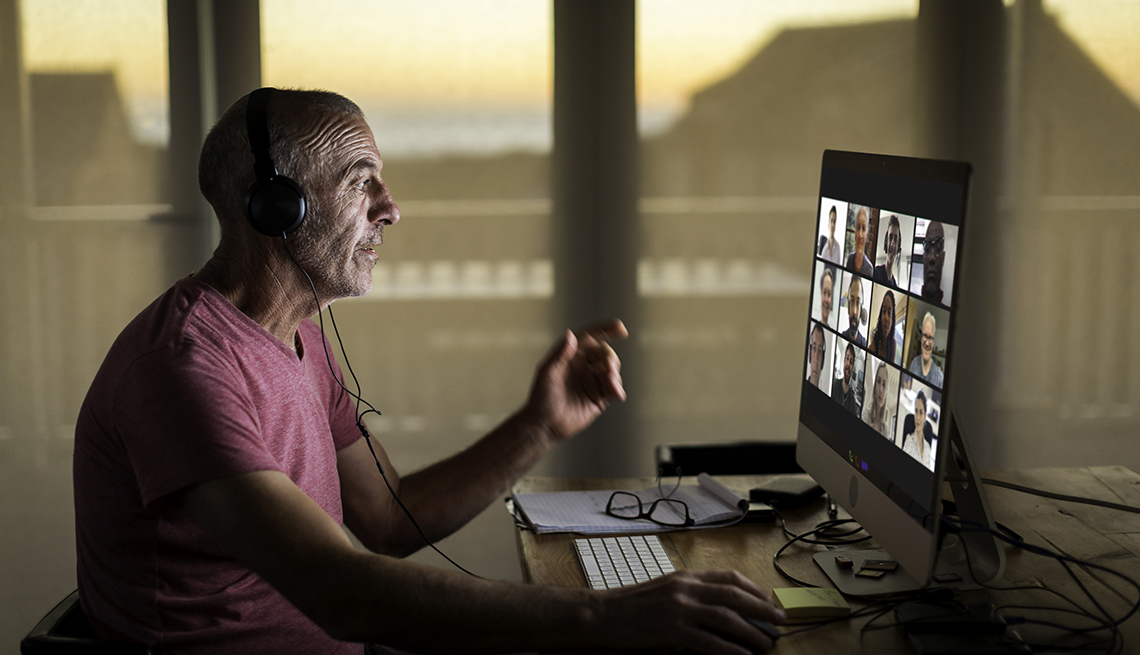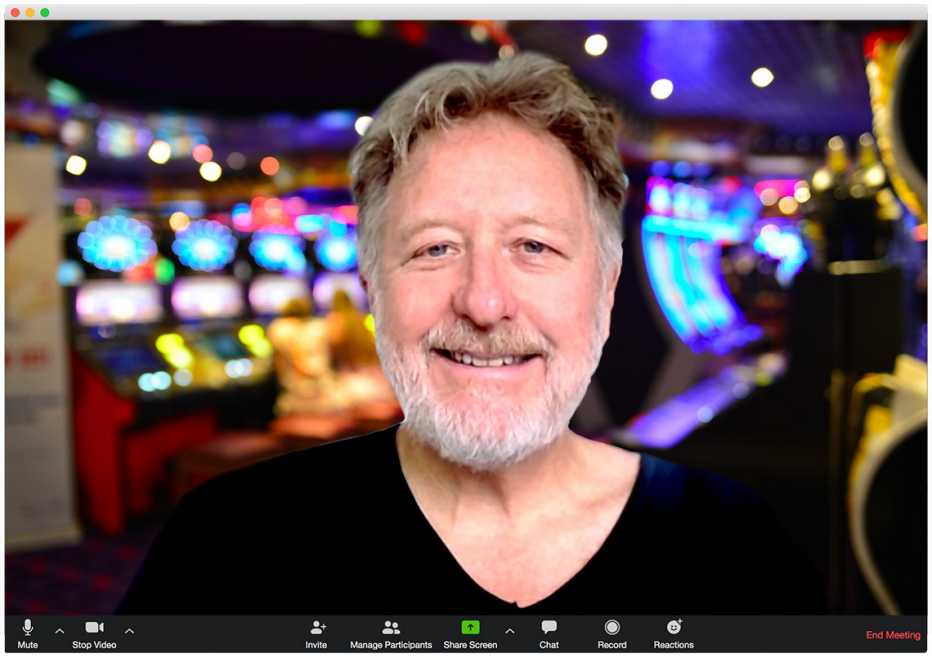Christie “Kanta” Haran, 51, Purcellville, Virginia, yoga instructor
Be a Star On-screen: Tips for Your Video Chat
• Use the best device. Laptops or tablets with stands — not smartphones — are best for video calls. They are easy to move to ideal filming locations and will stand up on their own.
• Get the right angle. Point the camera down slightly — no one wants to look up a person's nose. Use a laptop stand, stack of books or yoga blocks to align your device with the top of your head. Then angle the camera toward your eyes.
• Check your background.
• Avoid backlit glare from windows and harsh lights, which will cast you as a shadowy silhouette. Also, avoid walking around with your device. It can be disorienting to the viewer.
• Improve your sound. Use earbuds with a built-in mic to help your voice carry more clearly.
• Plan your call. Before a group call, designate someone to lead, and consider using hand raising to control the conversation. Avoid the urge to jump in; it muddles the sound. To reduce noise, ask participants to put themselves on mute when they're not speaking. —L.P.
At first, I didn't want to do livestream classes because it seemed too impersonal. But when we come together on video chat, we can wave and say, “Hey, how you doing? Hanging in there?” It's human. It's interactive. It's vulnerable. The first class I taught, I looked at the camera at one point and said, “I miss you all so much.” It really landed for me at that moment how grateful I am to be in class with them.
That said, teaching yoga on video is a little challenging. If we are in Downward Dog and I say, “Step your right foot forward into a lunge position,” it's hard to see in their little boxes on the screen whether they're gently drawing in their abdomen, lifting through the spine and expanding the breath. One time I encouraged them to move their feet in a certain way. But the way my camera was positioned, they couldn't see my feet! —As told to Brian Barth
Buzz Bruggeman, 74, Seattle, entrepreneur
My plan was to lie low, walk my dog, eat carefully, stay thin and flirt with a couple of cute women over video chat. Very cheap dates, no travel required. I put on a nice shirt, sweatpants — no need to dress up. They buy their own wine.
But then I looked around and said, “Who are the people I cared the most about, and where are they?” We held my birthday party virtually, and at peak we had 14 guests, including people in Silicon Valley; Sun Valley, Florida; and Brisbane, Australia.
The interesting intersection of it all was that some of them knew each other and some of them had no idea who the others were. Some fun stories, anecdotes and questions. Lots of conversation around the virus, how people were coping, a bit about the Seattle public schools, some talk about wine. One of my women friends is at Kaiser Permanente, and she had a lot of data and really understands both the medical story and the physiology. She was great! When we finished the call — the last guest left after about 21/2 hours — I got another glass of wine, started making dinner, and three of the people called to tell me how wonderful it was. There's something about being comfortable in your own environment: It's nonthreatening, easy to control how you look. No traveling. No parking. It felt pretty natural. —As told to Edward C. Baig
Edward Lee, 44, Sacramento, California, physician and Kaiser Permanente's executive vice president of information technology
I went into medicine to take care of patients, to heal people, to comfort people, to promote their well-being. I just didn't know that I would be doing a lot of that through the telephone, video and online messaging. I've been doing telehealth for 15 years, just not at the volume during this crisis. My day is just as busy, but instead of going from exam room to exam room, I go from one telehealth encounter to another.
It's a convenient and easy way for patients to access our care. The video is pretty good: I can see them smiling. I can see if they look ill, if they're in pain. At the same time, if there's a more detailed physical examination needed, I won't be able to do that. I can't feel a bump to see if it's hard or soft, I can't give an injection or perform an excision. There's a connection you'd have with a patient when you're physically in the same room, and it can be hard to substitute the degree of empathy you can convey. You can't hold a patient's hand when you deliver a difficult diagnosis. There are some drawbacks, but for more common types of interactions, it works well. —As told to Lexi Pandell
Courtesy St. John's Episcopal Church
The Rev. Patricia Harris Curtis, 68, Sylva, North Carolina
I'd never used Zoom before, but since three weeks before Easter, that's how we've held our Sunday services at St. John's Episcopal. I give the service from my office desk, wearing my collar and stole, though I don't wear my alb and chasuble. It's kind of hard to tell from the little squares on the screen what the parish is wearing, but I think of it as come-as-you-are church. I just ask people to prepare a sacred space in their home for the service — a candle, flowers or whatever that means to them. Normally, we always have coffee hour after service, where everyone sits around tables in the parish hall and chatters away. On video chat, everyone can't talk at once, of course, so we go one at a time. People share very touching stories, often from places of pain and anxiety. It's more intentional and more intimate than coffee hour. Isn't that ironic that intimacy might be increased when we're using technology? —As told to Brian Barth







































































